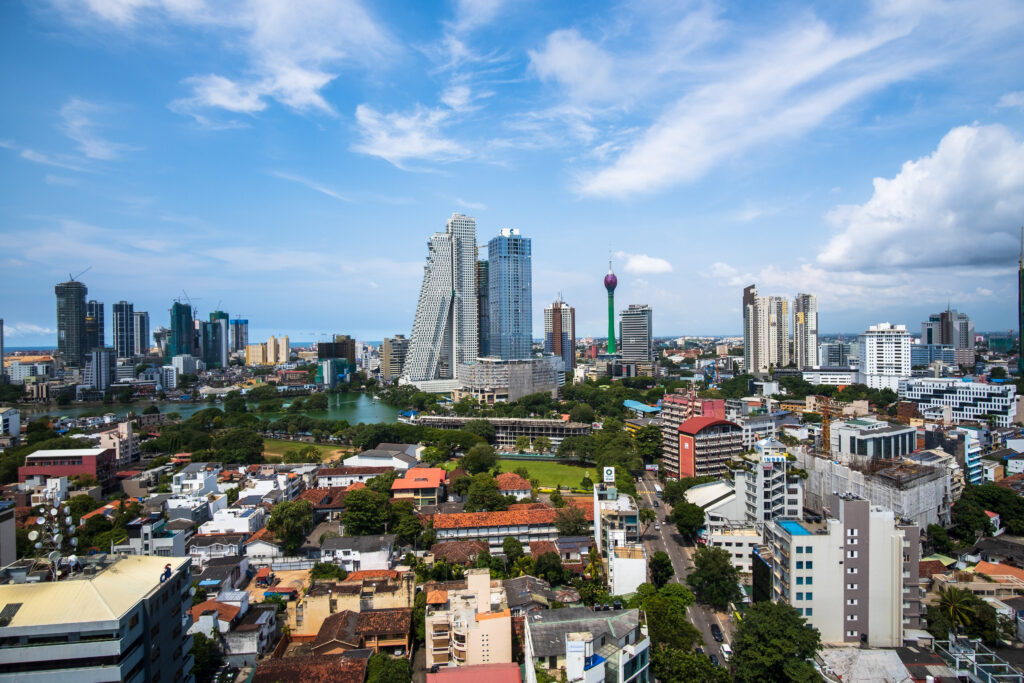Ett av våra samarbetsbolag söker svensk student inom försäljning – marknadsföring som vill förlägga sin praktikperiod till soliga Sri Lanka.
Läs annonsen och kontakta oss gärna för frågor -info@houseofsrilanka.se
Ett av våra samarbetsbolag söker svensk student inom försäljning – marknadsföring som vill förlägga sin praktikperiod till soliga Sri Lanka.
Läs annonsen och kontakta oss gärna för frågor -info@houseofsrilanka.se
Article in Swedish abotu Hiranya Peiris. We have translated the first part of it. Original you can find here
https://www.svd.se/a/xglq2B/hiranya-peiris-en-kosmologisk-superstjarna
”I want to find the answers that aren’t on Google”
Astrophysicist Hiranya Peiris hunts for the answers to how everything began and what is actually hidden behind the dark matter of the universe.
Text: Elin Liljero Eriksson – December 6, 2022
Saltsjöbaden Observatory. The roof rotates in the domed building.
Hiranya Peiris squints at a meter-sized gap that faces the sky and puts his hand on a nearly hundred-year-old telescope, Northern Europe’s largest.
She is described as a cosmological superstar, awarded a number of international prizes and a member of the Royal Swedish Academy of Sciences. As a professor of astrophysics and cosmoparticle physics, since 2016 Hiranya Peiris has divided his time between University College London and the internationally leading center for cosmology, the Oskar Klein Center at Stockholm University. Now she leads one of the decade’s most extensive international research projects in cosmology to find out what is hidden behind the dark matter in the universe.
But it’s mainly another mystery Hiranya Peiris couldn’t stop thinking about: the beginning of everything.
Why care about the universe’s past?
She devoured science fiction books and in her teens joined an astronomy club for young amateurs. But the idea of getting an education in his great interest lingered.
The civil war in Sri Lanka made Hiranya Peiris move to London with his family at the age of 16. Here she studied computer science at Cambridge, until she heard that NASA was looking for summer interns. The summer at JPL (Jet Propulsion Laboratory) in California, where they build and control satellites and space probes for NASA, changed everything.
Hiranya Peiris has worked on some of the largest research projects in astronomy. She has been part of the teams behind both Planck and the NASA project WMAP, two of cosmology’s most important space telescopes, both of which mapped the cosmic background radiation. As part of WMAP – The Wilkinson Microwave Anisotropy Probe – she managed to get answers to a long-standing puzzle: the exact age of the universe.
Här kan du läsa det senaste nyhetsbrevet från Sweden-Sri Lanka Business Council. Klicka på länken och få det senaste från och om Sri Lanka.

Researchers at Malmö University are part of an international network that produces drawings to be able to manufacture cheap respirators. The equipment will now be inspected and the hope is that it will be able to be used within two years.
A group of volunteers in various specialist areas, including dentists, doctors and engineers, have formed the LibreLabs platform. Covid-19 has shown the need to be able to help patients through the development of new technology. The purpose of the collaboration is to make medical technology accessible to all. The drawings can be downloaded for free.
Lives up to medical standard
Respirators help patients with breathing. The aim is to make a sustainable and affordable solution that is made available for production in low- and middle-income countries, where there is a significant shortage of respirators.
Together with colleague Lisa Papia, senior lecturer and dental technician, he has developed a design for 3D prints of some of the key components found in a respirator. Researchers at Trinity College Dublin have contributed computer simulations. In total, about 15 researchers are included in the project.
Can be ready within two years
A first prototype will undergo a quality assessment in London by an independent party to see if the equipment works as intended. Manjula Herath and Lisa Papia believe that this will be ready within six months. Changes will probably need to be made, and they consider it realistic that an approved respirator can be in place within two years.
”A commercially manufactured respirator today costs around 10,000 dollars and we believe that ours can be manufactured for around a tenth of that cost,” he says.
Sri Lankas startup community växer stadigt och detta tack vare stöd från både privata sektorn, men även universitetsvärlden. Universitetet i Moratuwa är en de främsta akademiska institutionerna på Sri Lanka och utexaminerar många studenter varje år, som snabbt får arbete i IT-företagen.
”Organised by the Entrepreneurship Society of University of Moratuwa together with the University Business Linkage Cell, Mora Ventures is a program aimed at budding entrepreneurs completing their higher education at Sri Lankan Universities. The initiative is currently pursuing its ambitious goal of discovering Sri Lanka’s first USD 1 Billion Startup Unicorn by the year 2027. ”